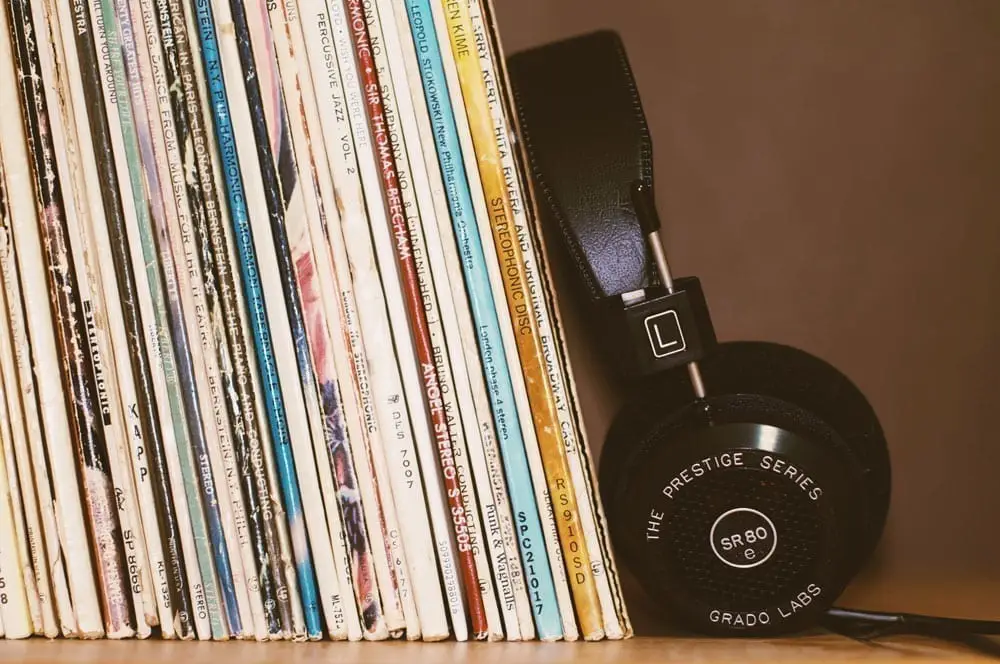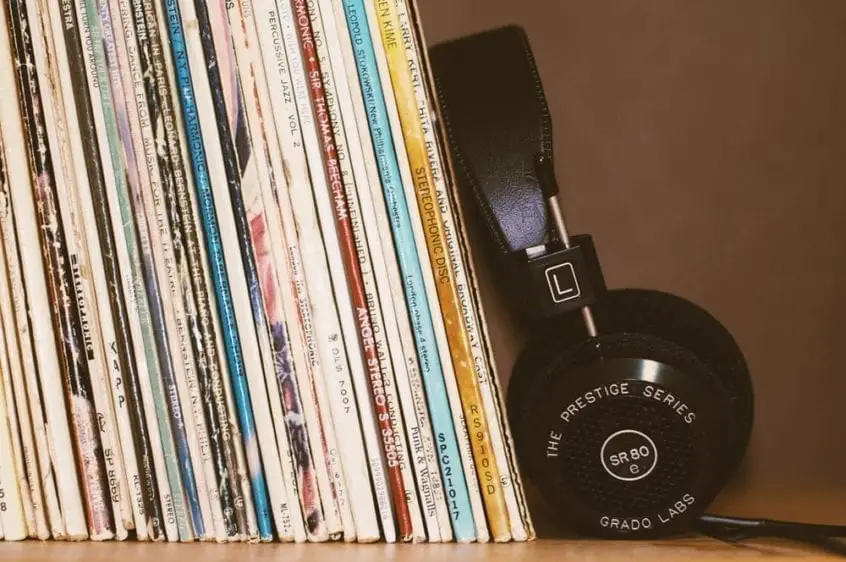It is the prerogative of each generation preceding the next to claim that their generation’s music was better. Or at least that’s how each generation typically feels…
We all get there eventually; at first you’re checking out what’s new on the block musically every day, then it’s every week – or even every month. Before you know it, you haven’t bought a new album in years. And eventually, you’re uttering that phrase pertaining to modern music that can only be filed under the category of “get off my lawn!”

I for one have long held the view that something was missing from many modern productions — not all of them — just some of them. However, music is such a subjective topic, and I’ve often dismissed my own view as simple generation bias and a product of my own experience. After all, one person’s treasure is another person’s trash, as they say.
But what if – to a degree – you were right; what if something had really changed?
The Sterilization of Music
According to a recent article published by qz.com, something has changed, and the culprit accused is production. The title, in particular, caught my attention: “This music production tool is the reason why all new music sounds the same.”
In essence, the article addresses the notion that (starting with the ubiquitous use of a click track) music has traversed a path leading to the continual pursuit of perfection to the point where even minor human error is considered unacceptable.
Over time, the standard of expected perfection has grown to a point where, they claim, human performers are expected to “sound like machines.” The click track might’ve begun life in the studio as a tool to help improve consistent timing, but over time, more and more musical elements were expected to fall in line: Bass player not quite in time with the kick? Sync it; Vocalist a fraction out of tune? Fix it with pitch correction software. Eventually, you find yourself at the bottom of a slippery slope that leads to a clinical, soulless, and formula-driven approach to music.
It’s a powerful claim, and arguably an over-simplified approach to the argument — there are, after all, so many other layers to consider: loudness war compression, for example. Another, less quantitative aspect to consider is musical style and how appropriate production techniques and the threshold of acceptable human error is often different from one style to another.
Highly subjective though the argument might be, the topic did get me thinking further about how our constant pursuit of greater perfection might have similar consequences when it comes to the listening format. In other words, could we consider the removal of vinyl’s imperfections in the move to digital yet another layer in the sterilization of music?
Vinyl as a listening format brings another layer of slight imperfection and variation that arguably contributes to a more varied, enriched listening experience. Digital can deliver very consistent results, but does this come at the expense of a more authentic experience that we connect with on a deeper level?
When I consider these kind of arguments, I’m often reminded of a well-known scene from The Matrix:
“Did you know that the first Matrix was designed to be a perfect human world? Where none suffered, where everyone would be happy. It was a disaster. No one would accept the program. Entire crops were lost. Some believed we lacked the programming language to describe your perfect world. But I believe that, as a species, human beings define their reality through suffering and misery. The perfect world was a dream that your primitive cerebrum kept trying to wake up from. Which is why the Matrix was redesigned to this: the peak of your civilization.”
Ok, so I’m not for one minute suggesting that you “define your reality through suffering and misery,” but the sentiment around our human tendency to reject perfection provides food for thought.
Beautiful Analog Imperfection
To make a point, let’s consider the effects of analog tape on the recording process for one moment. The imperfections in these machines imparted “tape saturation” onto the record, which in short translates to a mixture of subtle audible distortion, phase irregularities, micro pitch shifting, and harmonic transients across the entire recording. It’s hard to put your finger on it, but it’s there, and it sounds great; there’s a good reason people pay a lot of money to emulate this sound using plug-ins when recording digitally.
Tape saturation creates another dimension to the listening experience that some listeners prefer. Vinyl records also impart distortions onto a recording (sometimes subtle, sometimes less so). When listeners claim they prefer the “warm sound” of vinyl to colder, more clinical digital copies, they are most likely describing the sound of many subtle distortions imparted by analog recording and playback.
I often hear readers comment that “vinyl records are pointless if the recording is digital” (or at least statements to this effect). This topic is perhaps a whole new debate in its own right, but it does bring me neatly back to the overarching sentiment behind this article: by slowly cleansing the experience of recorded music, are we missing out on the beautiful imperfections that make up a great deal of what it means to be human?
As John Peel once famously said (and I must’ve used this quote to death now): “Somebody was trying to tell me that CDs are better than vinyl because they don’t have any surface noise. I said, ‘Listen, mate, *life* has surface noise.”




[…] element of human error is something we’ve lost touch with in modern music. Modern recording software makes is possible to produce a record that is perfect in […]
I just sold my 16 year old 3K collection of finely curated vinyl along with my VPI Traveler to a friend of a friend who needed some advice. He asked what I’d sell it all for, gave him a decent deal and he saved some money by me keeping about 80 priceless records Classic Records, UHQR, few box sets-and some priceless test pressings. About 1K of them were made in the last 8 years, and most were 24/96 pressed on vinyl— but they sounded great. I then found a mint Wadia 781i, and heavily discounted Wadia M330 network player. Timing was perfect due to a move, but I do miss the vinyl—oddly enough cleaning and trying new carts/needles. The days of finding gems at used stores is over. But the used CD racks are ripe like vinyl used to be four years ago. Even charitable stores get some great collections of CD. It’s the same as vinyl in checking the matrix, where it was manufactured, and the cost is so low I can buy 20 CDs a week and one nice SACD for under $60. Last year that bought me two records, unless I wanted to buy a money grab reissue of any band for $24, because it would be impossible to find used.
Point being— music is great in any format, just depends on who recorded it, label rep, mastering house tech, and packaging. On the last one you can tell which labels care when they put more money in the packaging than the studio time.
My motto is “Human Is Better Than Perfect”. When you dig deep, you will find that musical expression consists of the minute variations: micro-rhythms, micro-tones and micro-sounds. This does not mean that the surface noise, tracing distortion, and speed variations of vinyl improve the sound – I prefer DSF – but that vinyl can be more directly connected to the musical source and every attempt to eliminate the human element in music is headed in the wrong direction – including separation from the audience.
Recording studios are the wrong place to record. All my favorite albums were recorded live, and peer reviewed research indicates that music consumers prefer live versions to studio versions of the same pieces assuming the musicians are real performers.
Studios are designed to take the sound apart into little pieces and reassemble them like a hand crafted sausage. Music is like steak, an organic whole that does not survive splicing, overdubbing, isolation booths and headphones. I can hear the INTENTION to splice and overdub, and the lack of an audience in studio playing.
There was a PBS documentary about Tony Bennett’s pop duets. These were produced in Bennett’s old school studio by Phil Ramone, cut live in a couple of takes with the band playing in the room. Besides producing a hit record, every one of the singers said it was a great experience and they wanted to do records like this – but THEIR producers don’t know how to set it up and let the good sound roll.
Further, every knob in a recording studio generates temporal and spatial distortion. Most vinyl fans talk about immediacy, or pace, rhythm and timing (PRaT). I was stunned by the impact of the Scheffield direct disc recordings on Dahlquist DQ10 speakers which preserved minimum phase through the whole reproduction chain, bypassing the phase shifting of magnetic tape and post processing.
Human hearing has about 10X the time resolution of CD/Redbook (<3us), so fast transients are subject to jitter induced by the time quantization errors. Equalization, compression and all other calculations smear time. This is true for analog gear as well, but with digital you can have thousands of outboard gear channels and the temptation to overdo it is more compelling than candy.
Spectral contamination triggers the most sensitive human cognition and annoyance. We do not register 3% second harmonic additions, but 1/10% intermodulation is annoying and trained musicians can hear a few hundredths of the space between scale notes. All processing also generates artifacts like this, even at 32 bit floating point, because it is inherent in the mathematics of signal processing.
Analysis to microsecond resolution shows fractal patterns in the musical strikes of master percussionists. Recording engineers are usually oblivious to this, I remember one on rec.alt. audio.pro saying he went through a snare track in ProTools and found the beats varied by up to 10 milliseconds, and therefore was "sloppy". It was Roger Taylor, a great rock drummer, in musical conversation with the equally brilliant John Deacon and Brian May.
The drummer's job in a pop act is supporting the vocalist. Listen to Mick Fleetwood's kick drum on "Dreams" or Don Henley's on "Heartache Tonight". The thing that draws you in is the relationship of the fluid rhythm to the lyrics, a drum hook. Metronomes and other machine time phenomena like loops, splicing and overdubbing are anti-musical because they erase the human. Listen to the difference between a drum loop Phoenix recording and Thomas Bangalter playing to an audience.
I listen to a lot of Baroque recreations, which include historical instruments in the original tunings. The spacing of notes was uneven, varied from country to country and even city to city – and this was the rule for 35,000 years of musical instruments inn every culture around the world. It opens up a palette of sound that is missing from the pitch quantization of the auto-tune universe, which is black and white grayscale in comparison.
All folk music and traditional elite music is "micro-tonal" with intended deviations from equal temperament, which was invented in the 19th Century. Even today string quartets use slightly different pitches ascending and descending and to express a wider range of ensemble timbres. Influence of aural traditions in Jazz and Blues includes "bent" notes, Bel Canto uses wide vibrato and slides into pitch at the beginning of a phrase and out at the end to emote.
My most radical assertion is that incidental noises of live recordings add to the reality, forensic evidence of the time and place where the music physically connected to listeners. Audio people tend to live in a musical fantasy where people don't breathe or rustle, but those reactions are part music's tribal function.